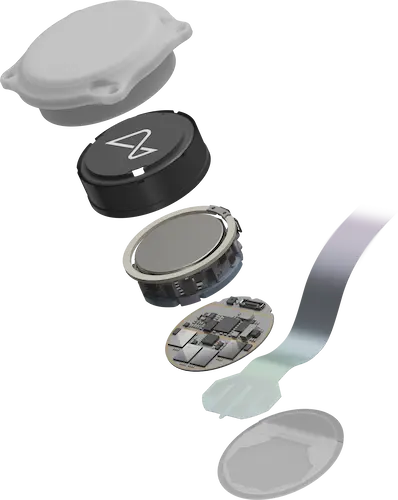
The concept of connecting our brains to the internet through brain-computer interface devices is completely mind-blowing! It’s incredible to see how artificial intelligence is making it possible to read human brain waves and convert thoughts into actual text, giving a voice to those who have difficulty speaking.
The potential for non-invasive communication is simply mind-boggling! But, at the same time, there are startups working on brain implants that could change the lives of people with physical limitations, granting them control over technology with just their thoughts.
There is also a popular sci-fi anthology series “Black Mirror,” on NETFLIX which explores the mind-bending dark consequences of brain-internet connections and raises ethical concerns similar to those that might be faced by real-world brain-computer interface advancements if not controlled.
Amidst all this excitement, I can’t help but wonder about the ethical implications and concerns related to privacy and data ownership. In this blog post, I’m excited to explore the current state of brain-computer interfaces, the amazing benefits they offer, and the important ethical questions we need to address.
Let’s begin with the first brain-computer interface device…
AlterEgo > A Wearable Device
An Indian MIT student (Arnav Kapur), created a prototype of a device named AlterEgo that can be worn around the ear and neck and can pick up on the subtle signals your brain sends to your internal speech systems when you talk to yourself internally.

The device employs bone conduction technology. It sends the AI’s response directly to your inner ear, blending with the sounds of the world around you. The best part? You don’t have to move your mouth, or jaw, or even type anything. It’s a seamless, non-invasive way to communicate and interact with the AI, making it feel like an extension of your thoughts. Pretty incredible, right?
AlterEgo can truly make a difference in the lives of people with speech disabilities like ALS (amyotrophic lateral sclerosis) and MS (multiple sclerosis).
Read More about How AlterEgo Device works and How it will help people with disabilities.
Neuralink > A Fully Implantable Device
Yes, Elon Musk’s Neuralink is completely implantable via a Surgical Robot which is designed to reliably and efficiently insert threads of this device in the human body.

Neuralink aims to create a symbiosis between the human brain and AI by building brain-machine interfaces with thin thread-like electrodes to directly access and manipulate brain cells using artificial intelligence.
At present, Elon Musk is focused on designing this to let people control a computer or other device anywhere they go. (Visit – Official Site)
The purpose of Neuralink isn’t just to connect the brain to technology, but also to restore neural activity in parts of the brain that have been damaged. It could effectively cure paralysis, blindness, mental illness, and neurodegenerative diseases like Alzheimer’s and dementia for those with spinal cord injuries.
So far, Neuralink has tested its chips on animals like a monkey to play the video game Pong with his mind and typing on a computer telepathically.
In late May 2023, the US Food and Drug Administration (FDA) approved Neuralink to commence human trials and the process and scope are not disclosed to the public.
Neurable > Interaction Through Smarter Headphones
Neurable is all about bringing neurotechnology into our everyday lives in a seamless way. They’re working on creating tools that can measure how our minds work and building brain-computer interfaces to understand our emotions and cognitive efforts.
Imagine wearing headphones that can also connect with your brain, allowing you to control smart devices just by thinking. You can learn more on their Official Site.

What’s interesting is that Neurable’s EEG devices, called “Enten,” are designed to be really user-friendly headphones, unlike any other EEG devices out there.
Emotiv > Innovating with EEG Monitoring Headsets
A start-up name Emotiv has also developed wireless electroencephalogram (EEG) monitoring headsets which have very advanced features. These versatile headsets cater to an array of industries, from gaming to healthcare and robotics, providing a practical solution for monitoring brain activity. You can find out more on their Official Site.
Cumulus > Revolutionizing Brainwave Scanning
BrainWaveBank is creating a neuroscience platform for cognitive health monitoring. Users wear a high-resolution brainwave scanning headset while engaging in a mobile game that tests different aspects of their brain functions. Data is analyzed using advanced machine learning algorithms to extract digital biomarkers. (Visit – Official Site)
And the List Continues…
Companies like Kernel, ZETO In, and BrainScope have also developed brain-computer interface devices aimed at enhancing various health conditions. While the list isn’t exhaustive, it underscores the growing landscape of startups dedicated to creating brain-to-internet devices.
The Ethical Questions
As we delve deeper into brain-computer interfaces, we’re confronted with crucial ethical questions:
- Privacy Concerns: How can we protect users’ privacy and ensure that their thoughts remain their own?
- Data Ownership: Who owns the data generated by brain-computer interfaces, and how can we safeguard it from misuse?
- Informed Consent: How do we ensure that users fully understand the implications and risks before adopting brain-computer interface technology?
- Vulnerability to Hacking: How can we prevent malicious actors from gaining unauthorized access to users’ thoughts and information?
- Inequality and Accessibility: How can we ensure that brain-computer interfaces are accessible to everyone, regardless of socio-economic status?
The companies mentioned earlier claim they’re taking measures to address these privacy concerns and give users control. However, the intricate challenges of managing data ownership and influence in this emerging field go far beyond simple statements. As we stand at the brink of merging human thinking with AI, the possibilities are awe-inspiring, but so are the responsibilities
If you have a different viewpoint, we encourage you to share your comment below ⬇.

